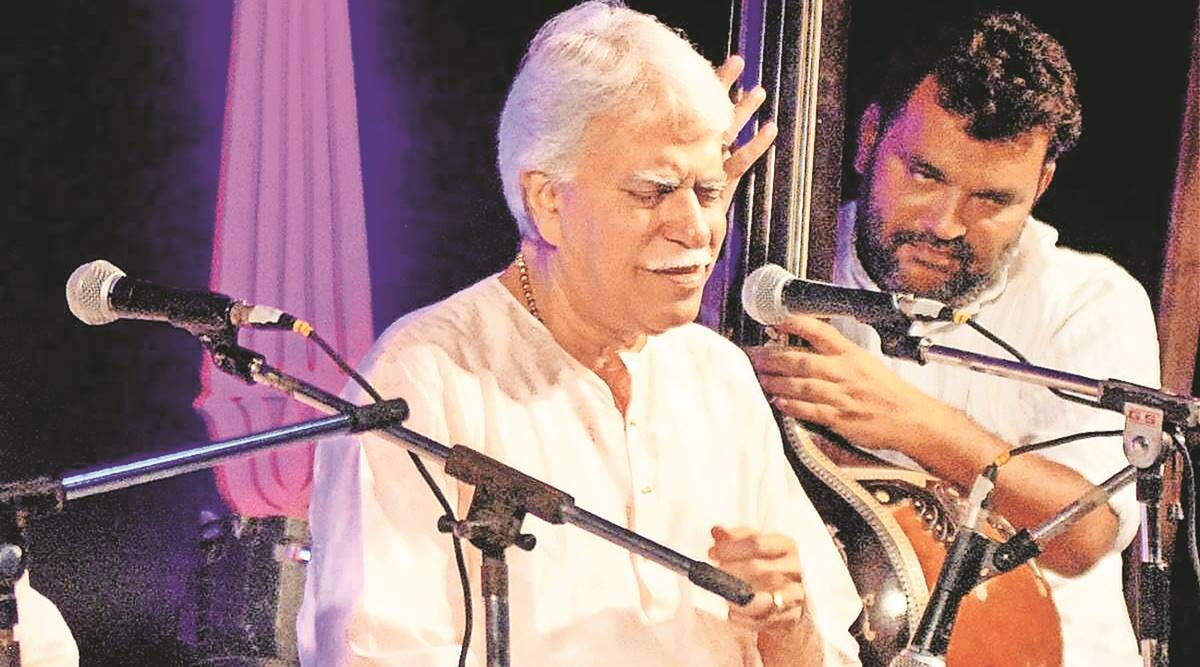 Pt Rajan Mishra (1951-2021)
Pt Rajan Mishra (1951-2021) Delhi-based Hindustani classical vocalists Pt Rajan and Sajan Mishra always craved to be in their hometown Banaras — at Kabir Chauraha, in the narrow lanes of which their ancestral house stood — a place where a plethora of legends such as Sitara Devi and Pt Kishen Maharaj lived and where the two brothers learned the contours of the music of their feted Banaras gharana under the tutelage of a well-known musical family.
“Asli ras humein yahin aakar milta hai (We find the true essence of music here). When one walks beside the Ganga — which has been a constant presence in our life — or when we sing next to the ghats, I feel peace. I can still hear the strains of my father’s sarangi when he played in the city. Even though it’s so chaotic around us, with a strange combination of celebration and death,” Pt Rajan Mishra had said during a conversation with this reporter once.
Pt Rajan Mishra, one half of the famed Banaras gharana duo, passed away in Delhi on Sunday after suffering a cardiac arrest. He was 70.
Admitted to St Stephen’s Hospital in Delhi earlier this week due to Covid-related complications, Pt Rajan was unable to find an ICU bed after he suffered a heart attack. He was kept in a post-ICU space with a BiPAP facility but no ventilator. As attendants scrambled to find a hospital with a vacant ICU bed, the maestro suffered a second, fatal heart attack. The bed had finally been arranged at Rajiv Gandhi Hospital.
After his cremation, the musician’s ashes will be immersed in the Ganga by his brother in the city they always yearned to go back to. Only this time, Pt Saajan will come back alone — without his constant companion on stage and in life.
Prime Minister Narendra Modi condoled his death, tweeting, “Mishraji’s association with the Banaras Gharana is an irreparable loss to the art and music world. My condolences to his family and fans in this hour of mourning.”
Boston-based Grammy-winning tabla player Sandeep Das has known the two musicians since 1978, when he was learning from Banaras gharana legend Pt Kishen Maharaj. According to Das, Pt Kishen told his father, “Watch out for these two boys — Rajan and Sajan.”
Speaking of the brothers, Das said, “The duo took on the mantle of the generation that we don’t have left anymore. These two have been our elders now —so respectful towards the young, the younger thought process. That lived experience is what allows an artiste to teach an art form further. And Rajan bhaiya was a true musician. He could pass that knowledge. It’s a huge loss to the country, his students, and to the future generations.”
Growing up in a musical family, Pt Rajan’s gandabandhan (thread ceremony) was done by “Gayanacharya of Banaras” Bade Ramdas ji, their granduncle. But the two brothers learned from their father Pt Hanuman Prasad Mishra and uncle Pt Gopal Mishra — sarangi legends from mid-20th century.
The brothers always sang together, their voices aligned, precise, and synchronised as if they knew every note not just in the music system but also the next lead that their partner would take.
Their career began with “hazris” in temples. Their first proper concert was held at Sankat Mochan Mandir in the early 70s in Banaras followed by a plethora of international concerts, an oeuvre with a huge number of compositions, and a series of awards including a Sangeet Natak Akademy Award in 1998 and Padma Bhushan in 2007.
Every concert by the two brothers has always been exemplary in terms of a duo performance. Often, their brother-in-law and Kathak exponent Pt Birju Maharaj would be present at the concerts. Sometimes, impressed by their performance, he would get on the stage and present bhaav as the two brothers sang.
The Banaras gharana is recognised more with thumri, chaiti, kajri, tappe among others and less with khayal, but the two brothers focussed on the latter.
“And how brilliant have been their duets when they sing bada khayal. Singing as a duo in classical is hard. This was one of the very few acts left. I can’t imagine what Saajan ji is going through,” said dhrupad exponent Ustad Wasifuddin Dagar.
But for Das, Pt Rajan was not only a musician par excellence but also a wonderful human being.
“The wonderful thing about Rajan bhaiya is that he would always treat even the youngest kid in the room with respect and constantly say, arey ye toh khao (please eat this) in his unique Banarasi lehja (style), recalled Das.
“One would be mindful because in classical music we are taught to be. I’d say ‘nahi bhaiya main theek hoon (No bhaiya, I am fine)’… He was so fond of food and would insist ‘arey khaoge nahi toh theek kaise rahoge (if you don’t eat how will you be fine)’. And he’d just laugh and put some food on your plate.”
- The Indian Express website has been rated GREEN for its credibility and trustworthiness by Newsguard, a global service that rates news sources for their journalistic standards.

